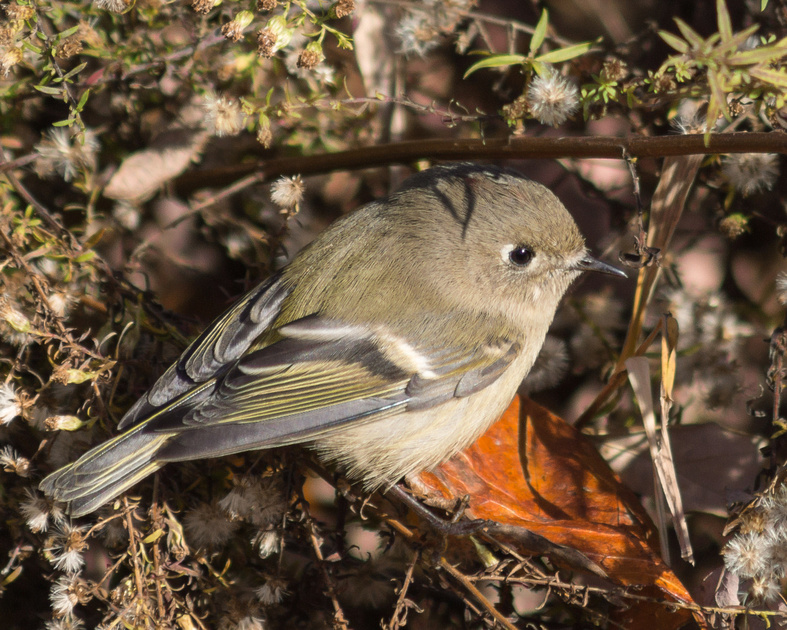Welcome to my blog pages. I will occasionally document some of my unusual wildlife photography experiences using this format. When relevant, I'll try to include field notes and other information that might prove interesting to readers.
Red Fox Kits - 2015
While out in early May, I was checking out a frequently used fox den near my usual walking route. It's in the deep woods about 30 yards behind a row of townhouses and has four or five entrances over an area of about 15 square yards. I walked up to investigate the main entrance and came within a foot of stepping on a sleeping kit. The kit blended in perfectly with the reddish brown leaf cover left over from the fall/winter.
I quietly moved away and sat down on a fallen tree trunk less than 20 feet from the den entrance. The kit eventually awoke and went in the den offering no good shots. I decided to wait a while just to see what might happen. Within five minutes, the tinniest kit I've ever seen emerged from the den. He was wobbly and seemed very unused to the daylight. He saw me, gave me a close look, but clearly didn't have any idea that I might be a danger. Soon, four more kits emerged from the den. Again, they all spotted me (remember, I'm 20 feet away), but didn't seem alarmed. I'm pretty sure they had never seen a human before.
Over the course of the next 15 minutes, I continued to take photos (about 200) while the kits wandered around the den entrance. They would occasionally get spooked by my slight movement, but quickly realize that I wasn't an immediate threat. They were also pretty inquisitive. One actually came up to me and sniffed the toe of my boot. After a couple of seconds, he scampered back toward the den.
The area around the den is heavily wooded with oak trees, oak saplings, many briar vines and the usual forest undergrowth. The den is several years old - maybe decades. I have kit photos at the den from as early as 2008 when I first started shooting wildlife. The light is generally pretty awful for photographing. There are a few places where the sunlight periodically peeks through, but by and large, it's very low light - even with no leaves on the trees. By May, new growth is rapidly appearing and shooting conditions deteriorate daily. So, I am just about always using high ISO (1600-3200), shooting with a wide open lens (f4 - f5.6) and using slow shutter speeds (1/60th - 1/125th). White balance (I use auto and adjust in post processing as best I can) is also tricky with the new green foliage overhead, the occasional sunbeam shining through, changing light and the deep shadows.
As kits grow older, they quickly become increasingly aware of their surroundings and get easily spooked by any movement. Over the course of the month of May and early June, they became harder and harder to photograph. Generally, when they spotted me, they would dart back into the den. I photographed mostly from three locations behind large trees, I would often wait for 30 minutes or an hour near a den entrance before any of the kits would appear.
The parents were always out hunting for food. Clearly, feeding five kits is a full time job. They catch anything they can, but the kit diet is mainly Eastern Chipmunks and Eastern Gray Squirrels. I have even seen a kit eating a Red-shoulder Hawk. I have no idea how it was caught.
By early June, the size differences of the kits seemed to increase. The largest was possibly twice as big as the smallest. In past years, there is always one kit that seems to be the most aggressive, but I've never seen size differences like this 2015 litter. Throughout most of May, I rarely saw the parents. I can't believe they didn't know I was visiting the den almost every day. They must have seen me a time or two. In late May while I was at the den, one of the parents walked up with a chipmunk for the kits. When I was spotted, the parent immediately walked away stopping a time or two to make sure I was following. I was led about a hundred yards from the den out into the open (on the edge of a golf course). The parent lay down under a small bush and just sat there for ten minutes while I sat in the open taking photographs. I was only 20 feet away. This was clearly a very trusting Red Fox.
Below are several of my better photos of the kits and parents. All the photos are hand held or with the lens braced against a tree. I used a Sony A-77 camera and a Sony 70-400mm G2 f4-f5.6 lens. The full set of edited photos covering May 4th through June 17 is here:
http://aehass.zenfolio.com/p269233010


Junior emerges from the den May 4th
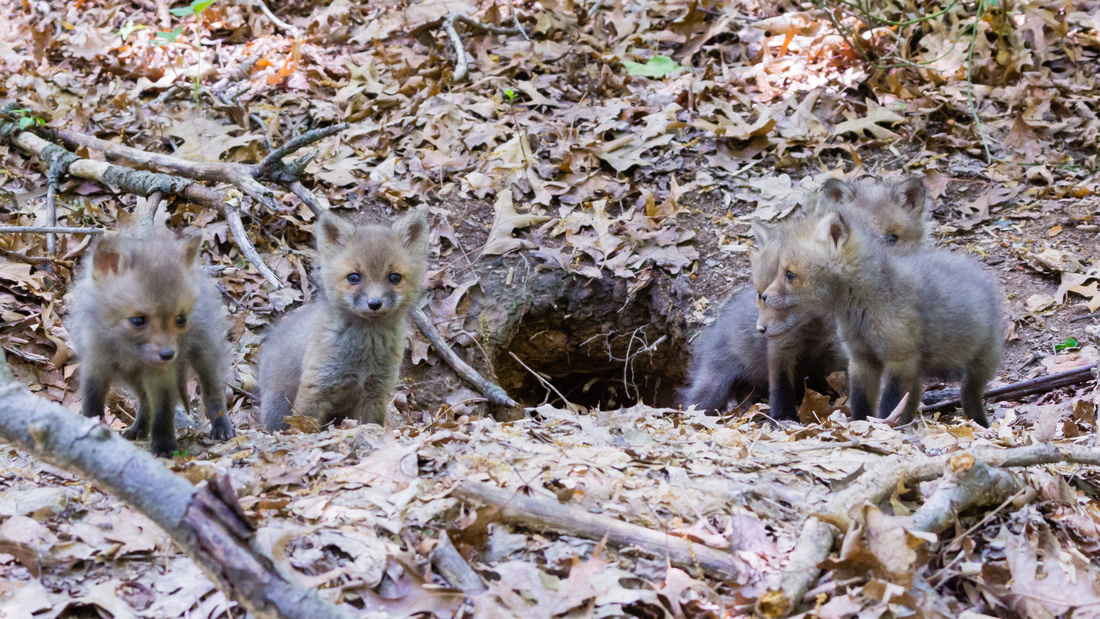

All five kits


A nice clean pose


At the front door


In the sunlight


Resting in the leaves


Sound asleep
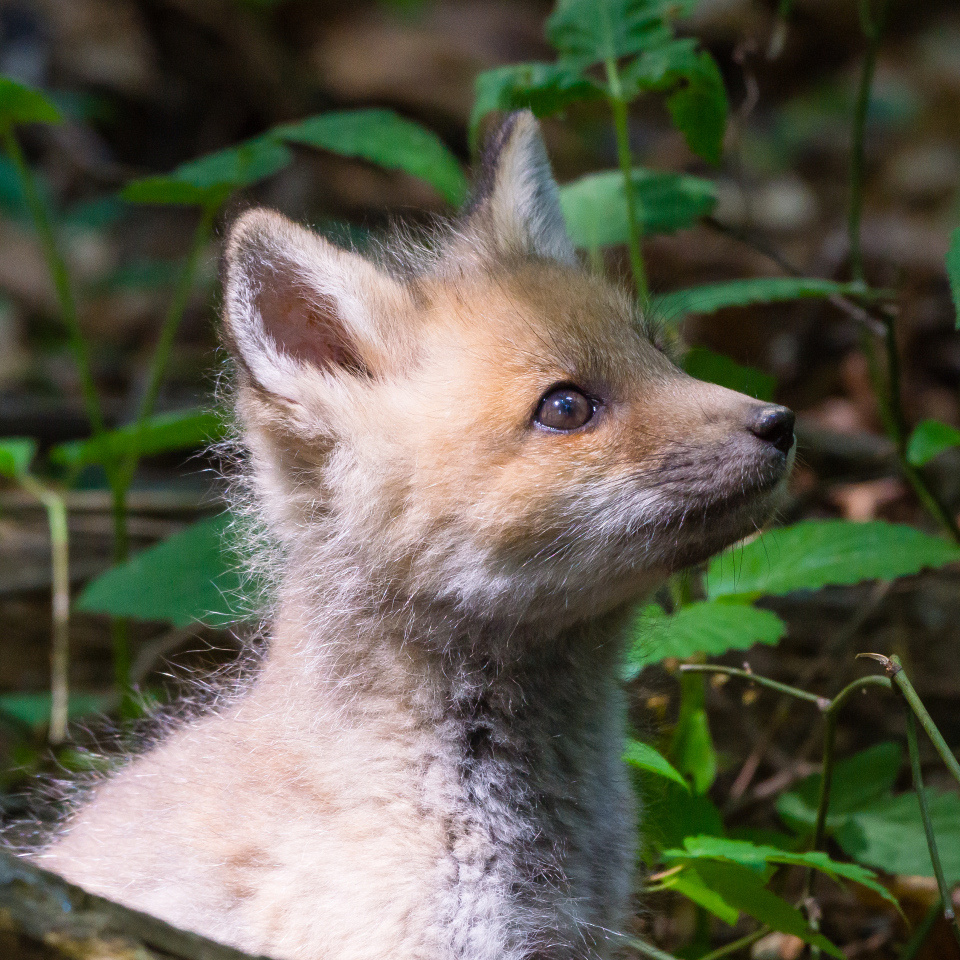

Having spotted a bird
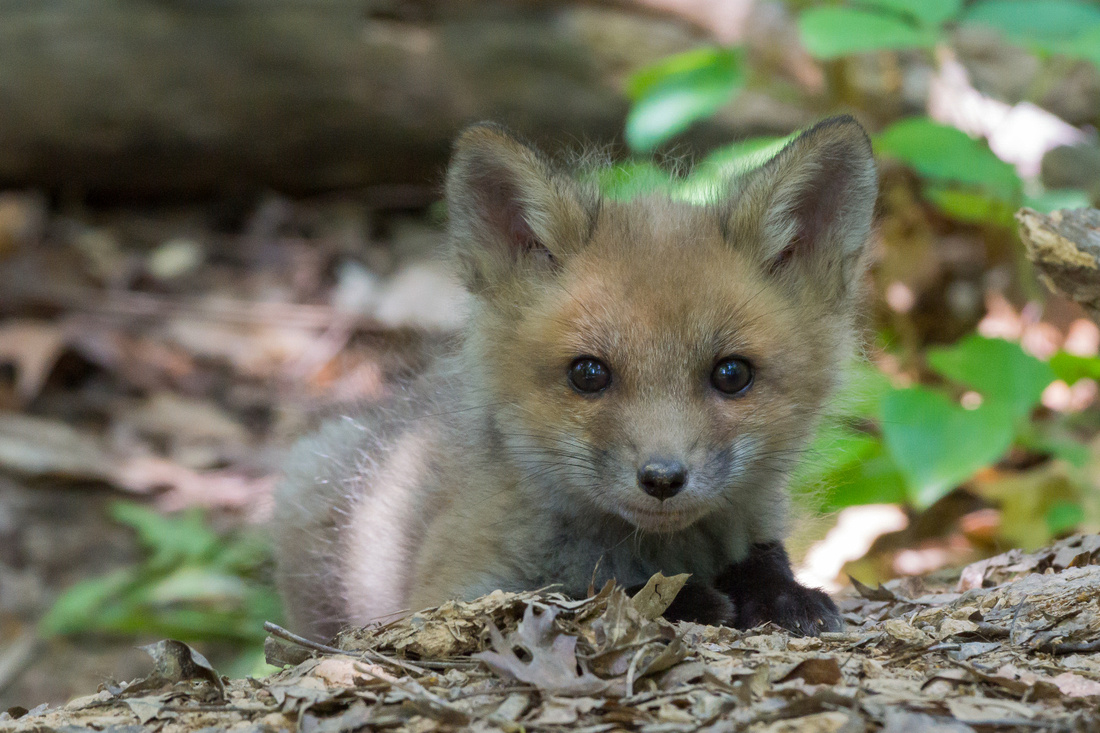

Black paws
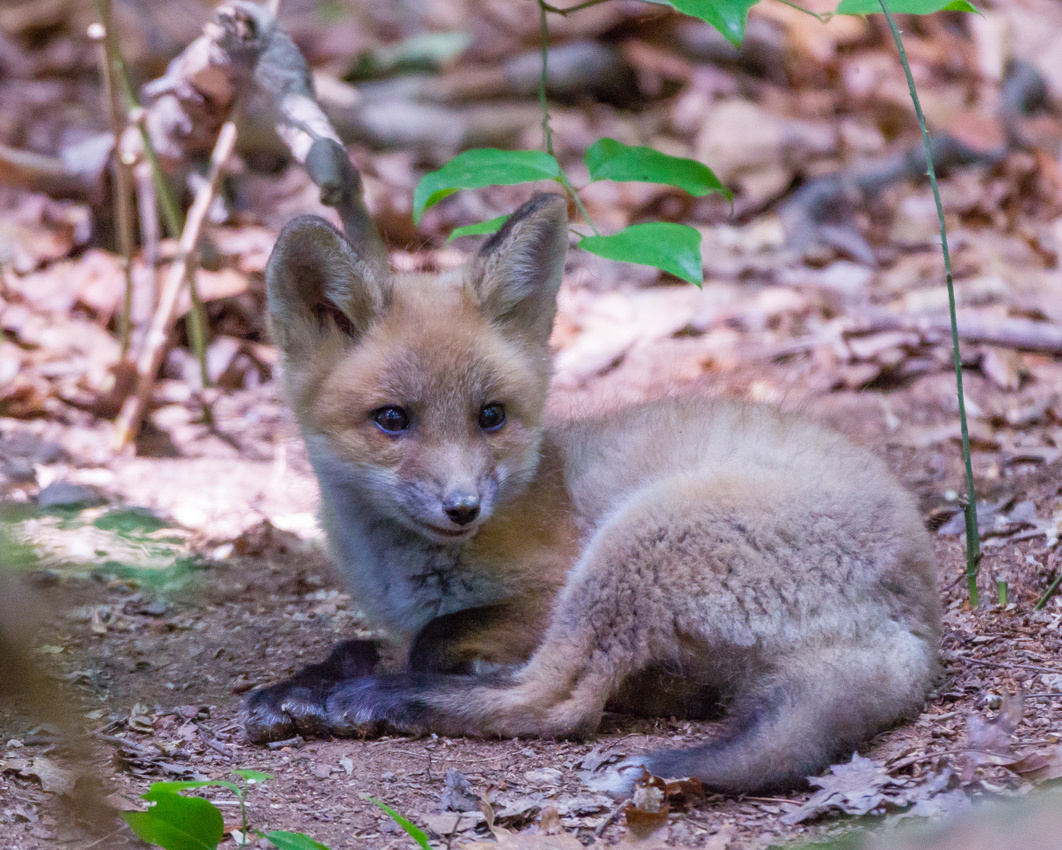

Big ears
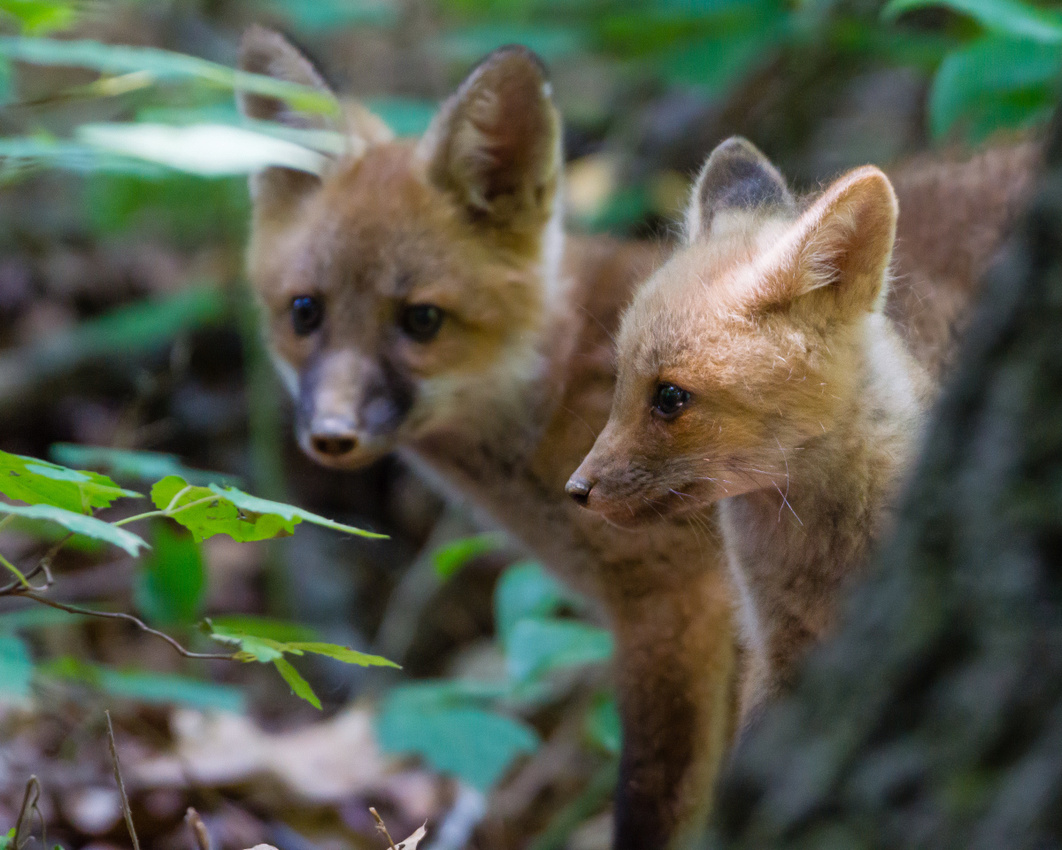

Size difference
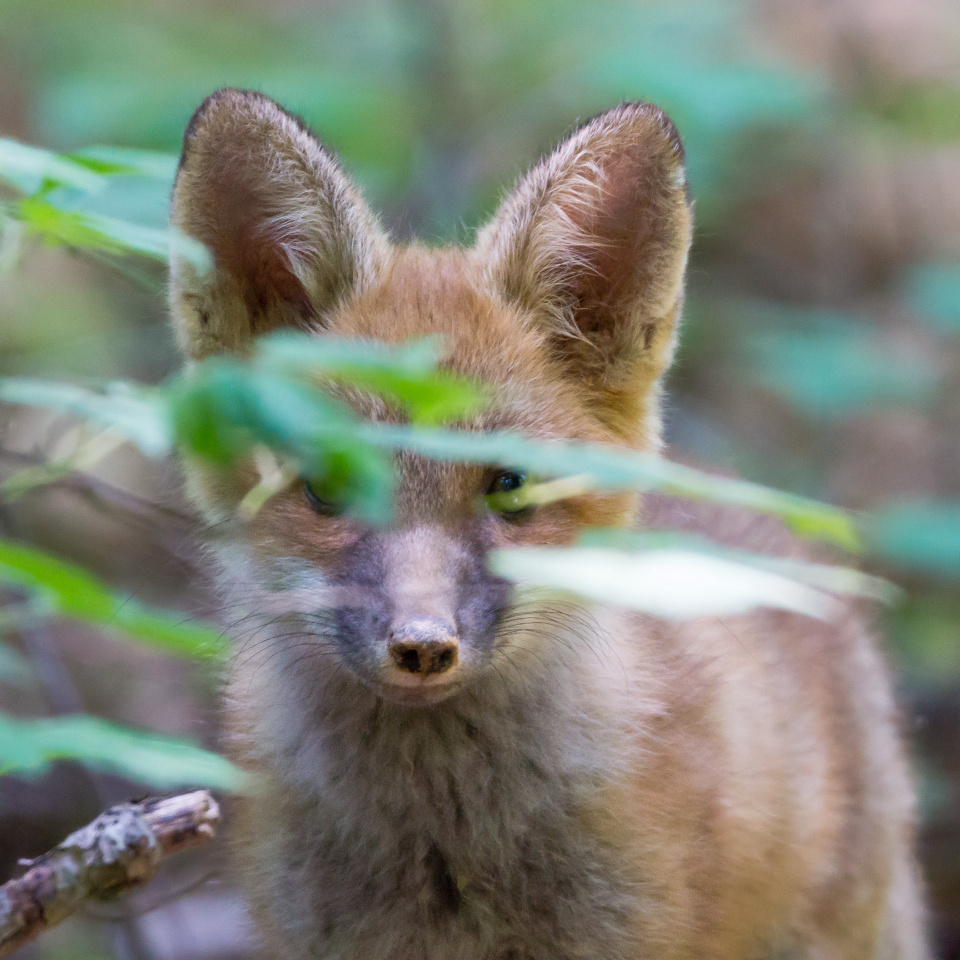

Typical tactic
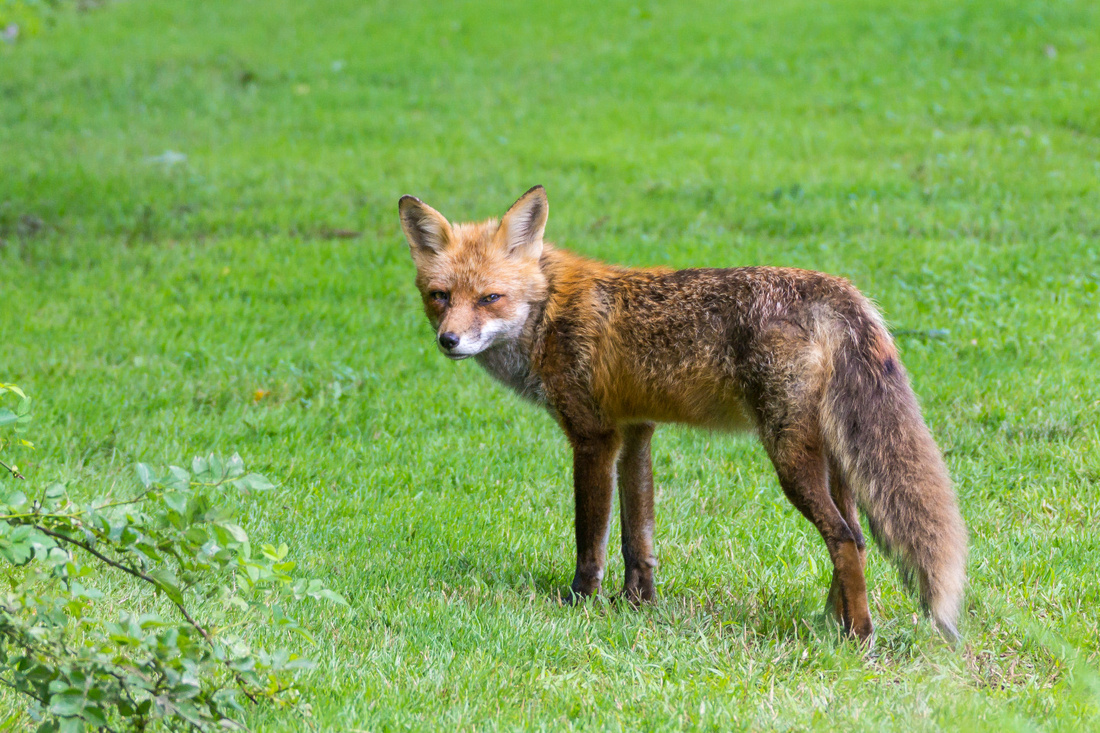

Dad lures me away from the den
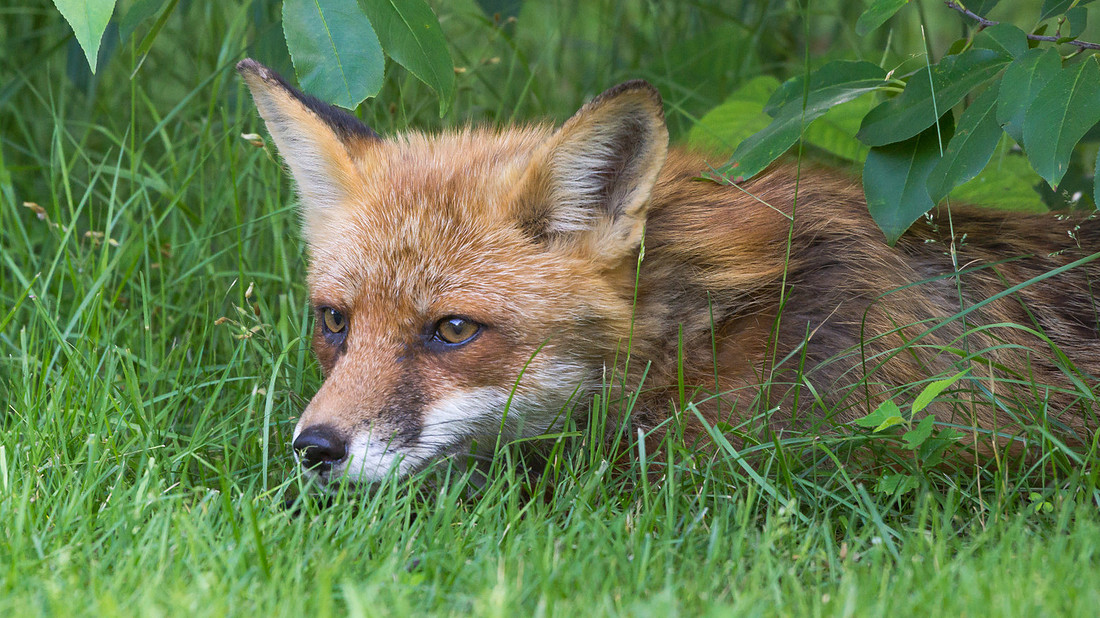

Dad resting under a bush
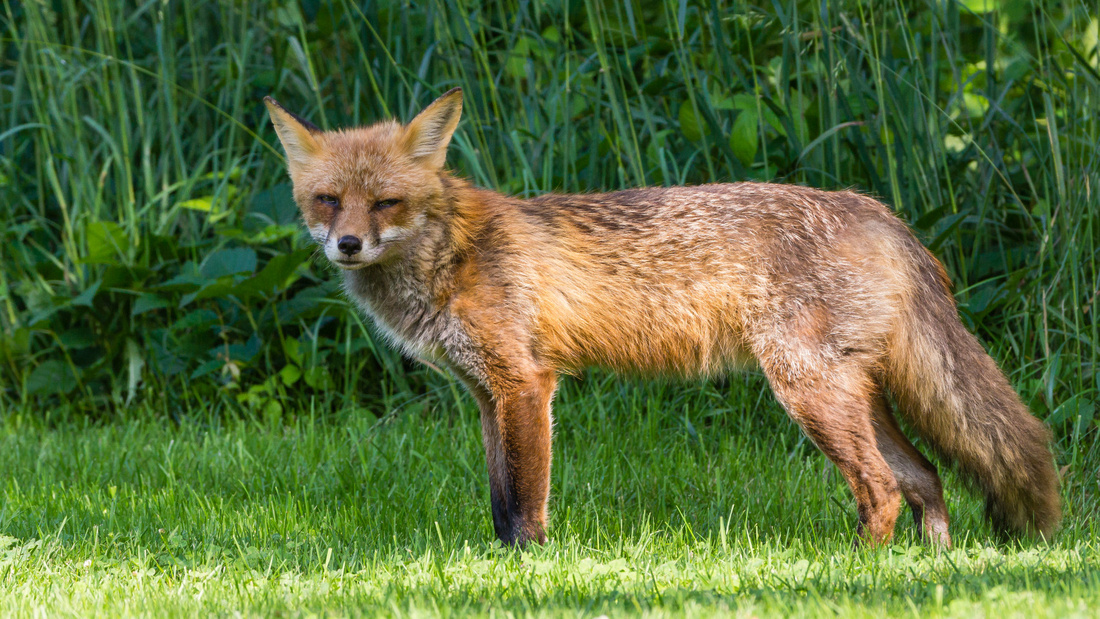

Dad from ground level
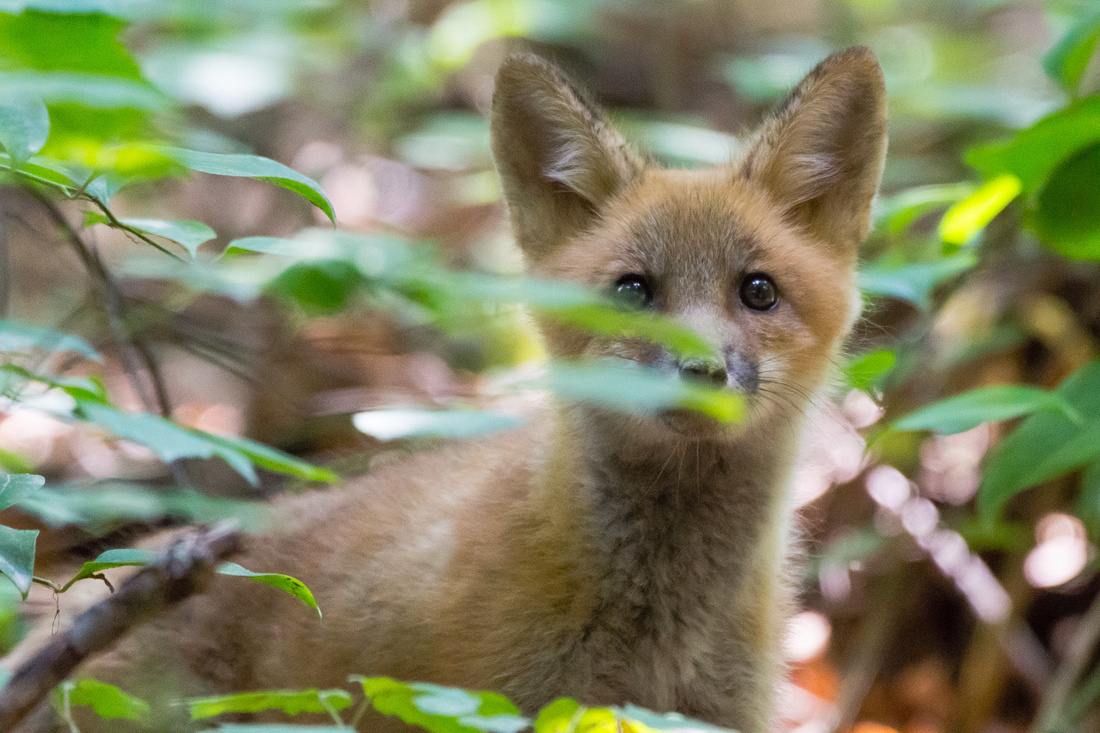

June 9th in the ground cover


Dad with a chipmunk
Shooting small birds in flight - the easy way
Shooting birds in flight (BIF) is one of the more difficult aspects of wildlife photography. I've never been particularly good at it, but occasionally get lucky.
Two situations generally arise - one with a busy background (trees, buildings, etc) or one with a reasonably clear sky. The first situation is significantly more difficult than the second. With a busy background, you have to use spot (or possibly zone - a group of a few spots) focusing and track the bird while keeping the focus spot precisely on the subject. Slower flying birds (herons, vultures, egrets, eagles, etc.) are generally easier, so they are good for practice. Hawks are more difficult, but not nearly as difficult as small birds - unless you have a clear background and a camera with a fast auto-focusing lens.
There is a Martin house near my home on a local pond. In the spring and summer, the Purple Martins are very active around the house in nice weather. Often, there are as many as 15 or 20 birds flying around the house gathering nest building materials. The house is on a tall pole out in the open on the bank of the pond providing a nice clear background above the horizon.
In this situation, I can set my camera on wide area auto-focus (WAF) since I'll be shooting against a clear background - the sky. Using WAF, the camera will focus on anything in the frame creating contrast. Since the bird is the only contrasty thing in the viewfinder, that's what the camera focuses on.
With most BIF shooting, it is best to keep your shutter speed above 1/1200 of a second. This keeps motion blur to a minimum. With small fast flying birds even higher shutter speeds may be necessary. I use aperture priority (I set the aperture and let the shutter speed vary) and set my ISO to 400. This tends to keep my shutter speed above 1/1200 and gives me reasonable control over image sensor noise (graininess in the photos). Lower ISO is usually more desirable, but with my Sony A-77, ISO-400 is a good compromise. My lens (Sony 70-400mm f4-5.6 G2) is very sharp shooting wide open, but even better shooting at f8. Depending on the amount of light available, I adjust my aperture to keep my shutter speed above 1/1200th with f8 being ideal. F8 also provides a little more depth of field (DOF - the depth of the area in focus) than shooting wide open. Also, since the background is brighter than the subject, I set my exposure compensation to a plus 1.3 - 2.0 again, depending on the amount of light available. This tends to get the best exposure on the bird. Finally, it is best to have the sun behind you as much as possible. This places more light on the subject, will require less exposure compensation and make it easier to see the fast moving bird in the viewfinder.
With the setting as described above, I stand within about 20-30 feet from the Martin house, select a focal length somewhere between 100-200mm, pre-focus on the house and wait until a bird(s) are circling. All that is required is to find the bird in the viewfinder and fire away. The camera & lens will generally do the rest. My keeper rate using these setting is in the 50% range. I've also used slower focusing lenses - the Minolta 70-210mm F4 and the Minolta 75-300mm f4.5-5.6. They are slower focusing, but I can still get usable images. However, the keeper rate is lower.
Here's a few Purple Martin photos I took recently using the above techniques. All were shot in RAW format and processed using Adobe Lightroom 5.2. Even adjusting my exposure compensation when shooting, I usually had to increase the exposure on the subject in post processing for the best result.
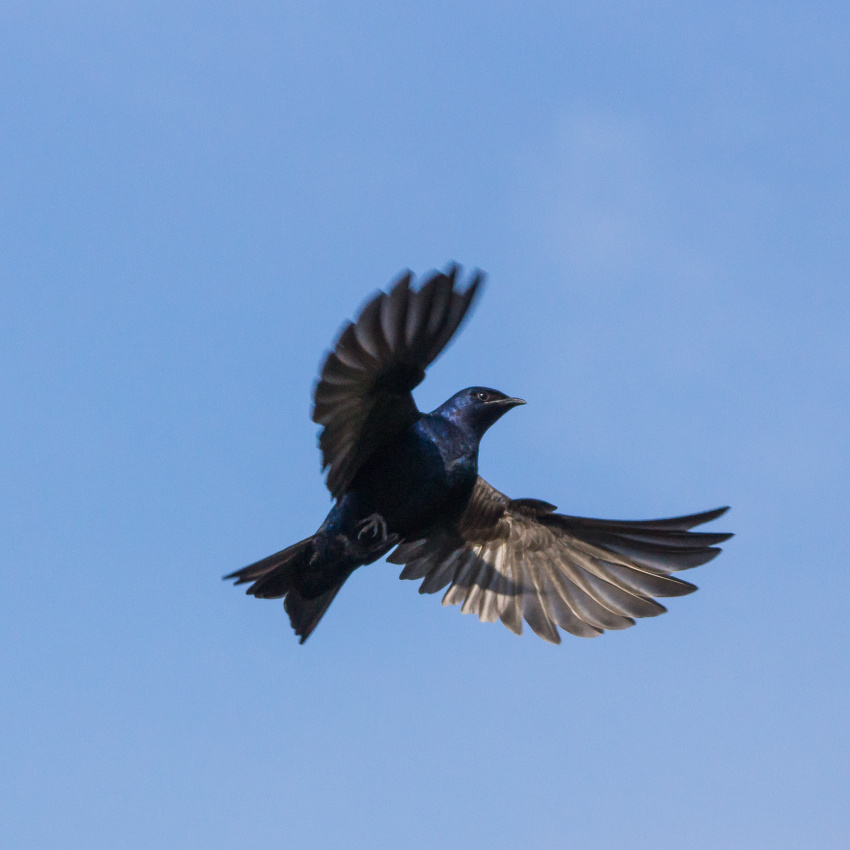

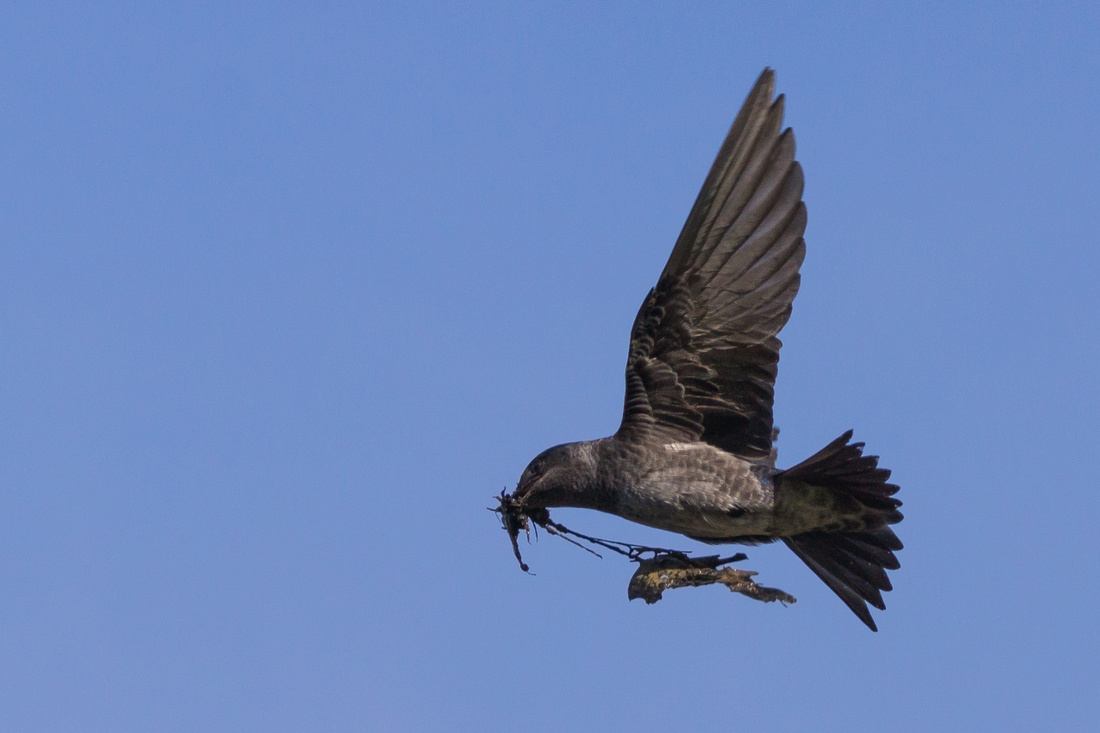

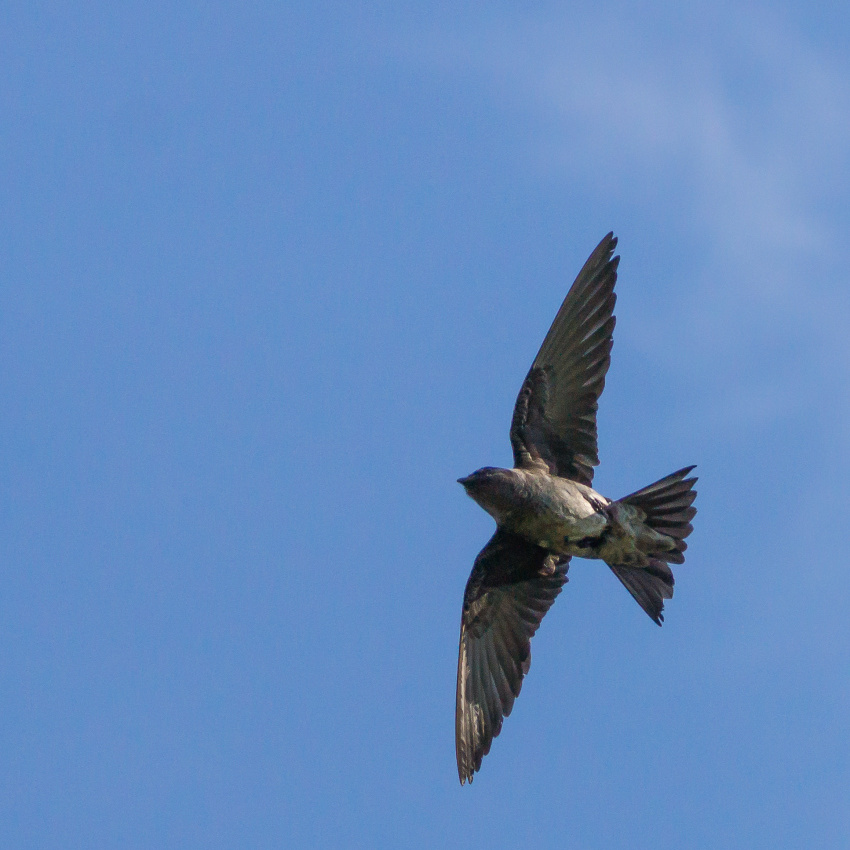



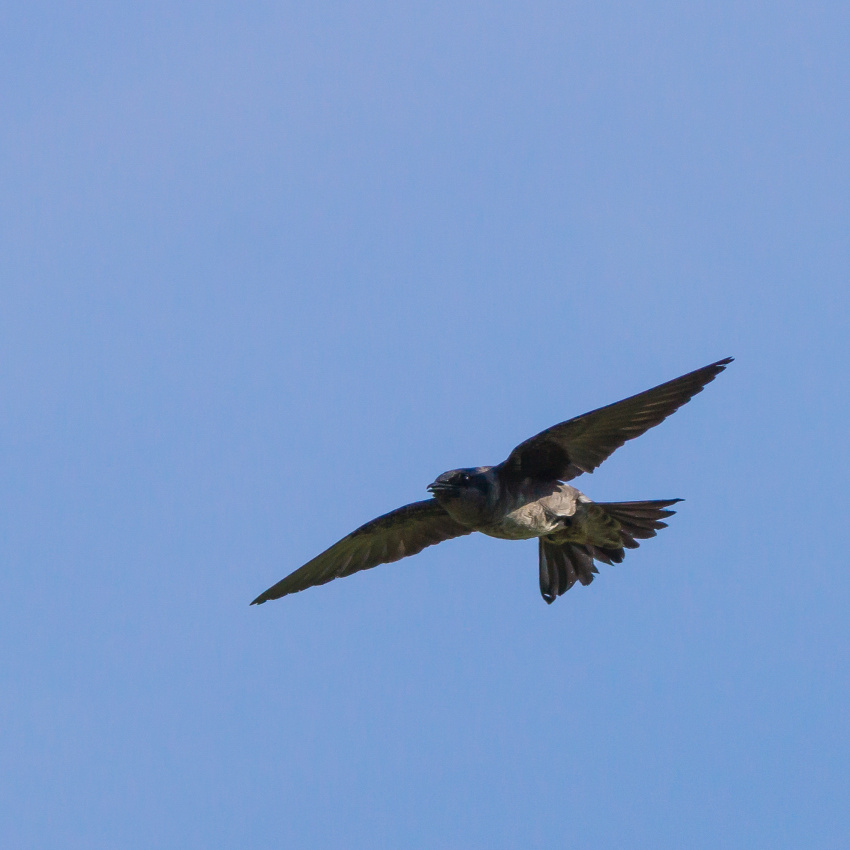

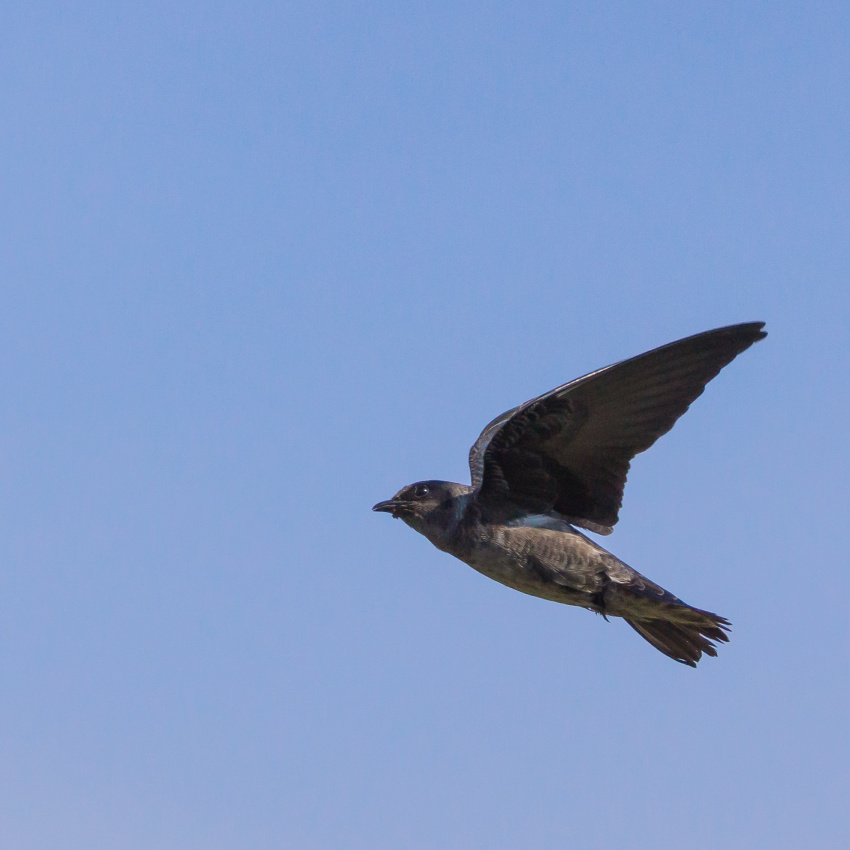

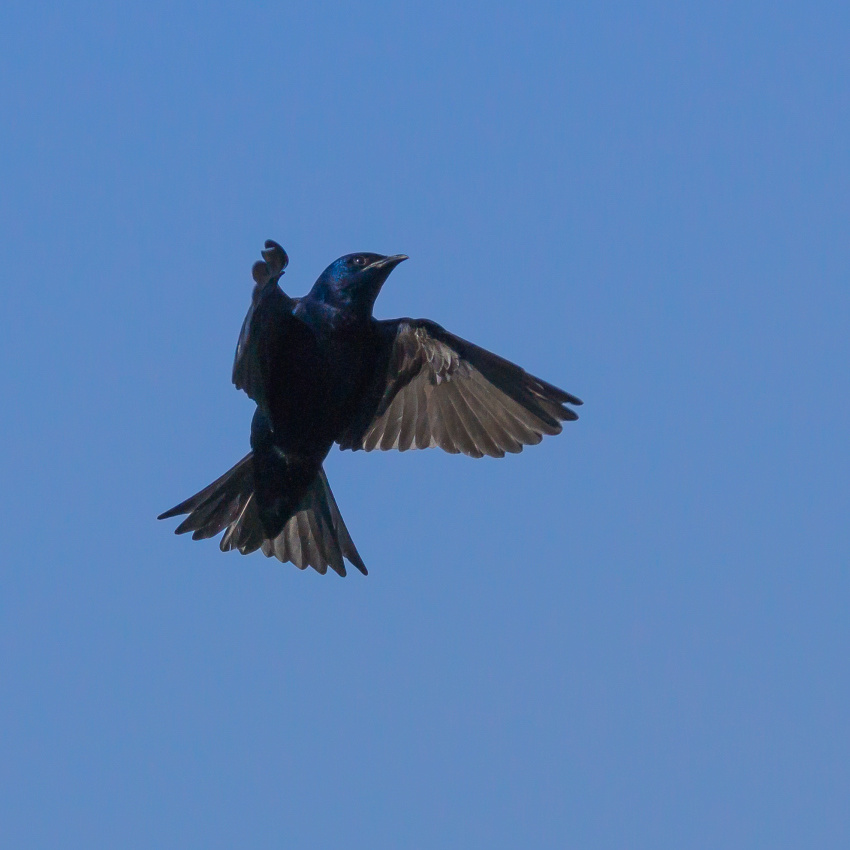

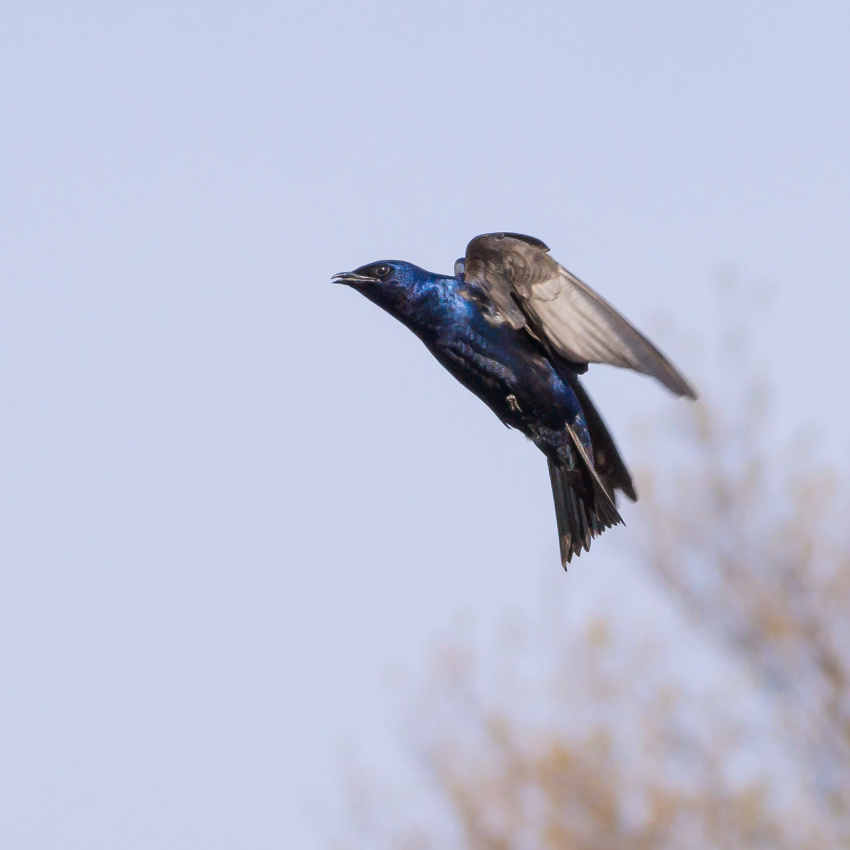

Great Blue Heron
The Great Blue Heron is simply, fun to photograph. Many won't let me get close to them, but sometimes one comes along that just doesn't mind having humans around. Here are some images I took of one that visited Links Pond a few times in March. I followed him around the pond as he fished the shore. Most of the time I was withing 15-30 feet of him. He never gave me a second thought.


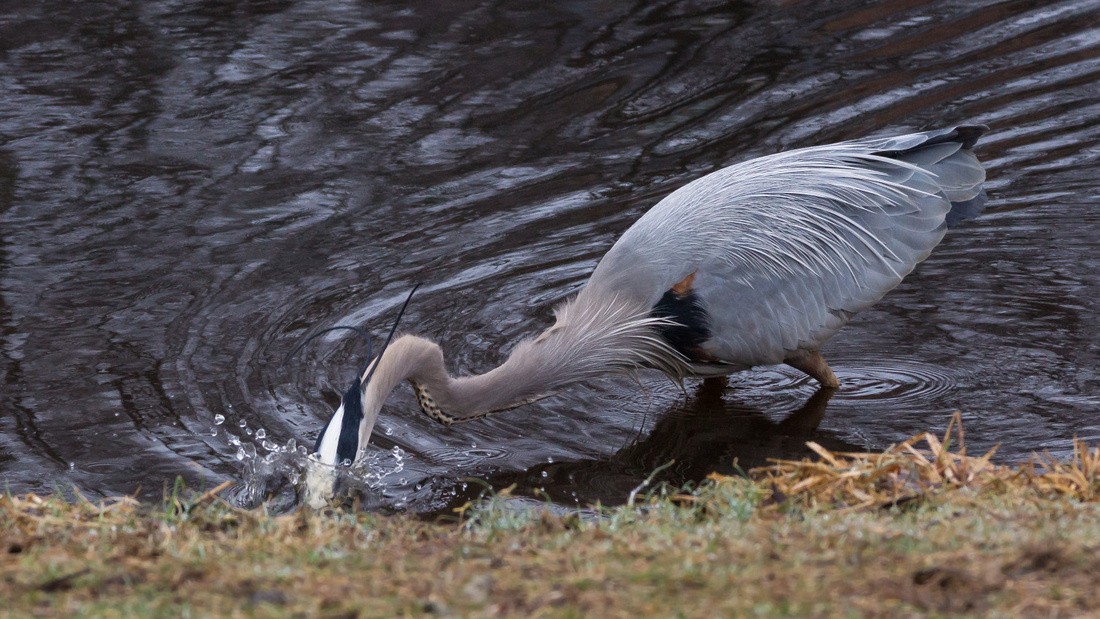

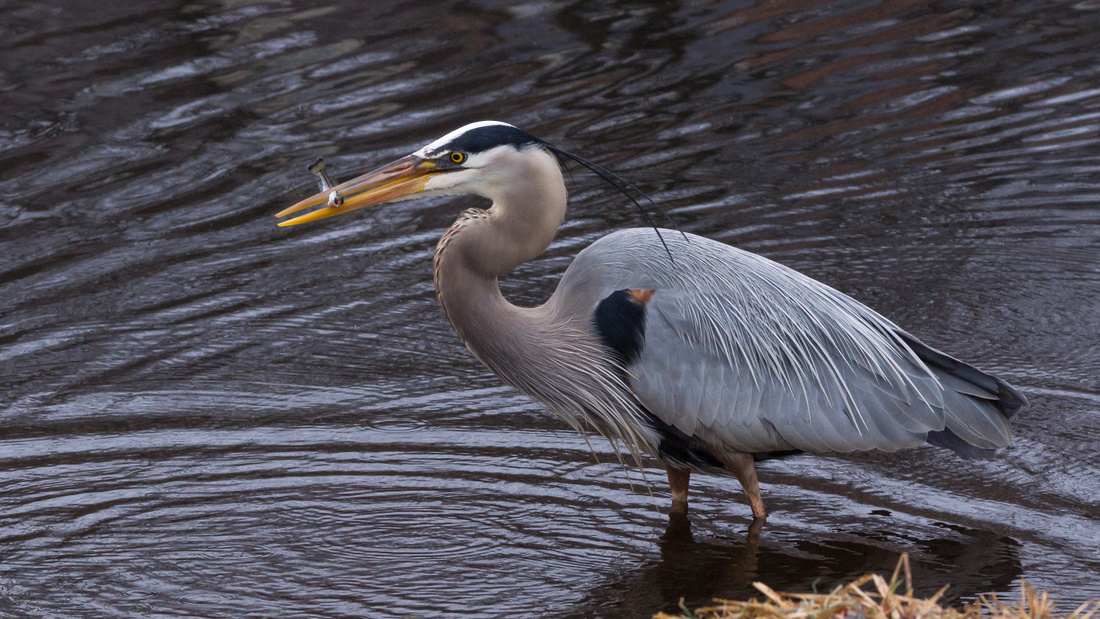

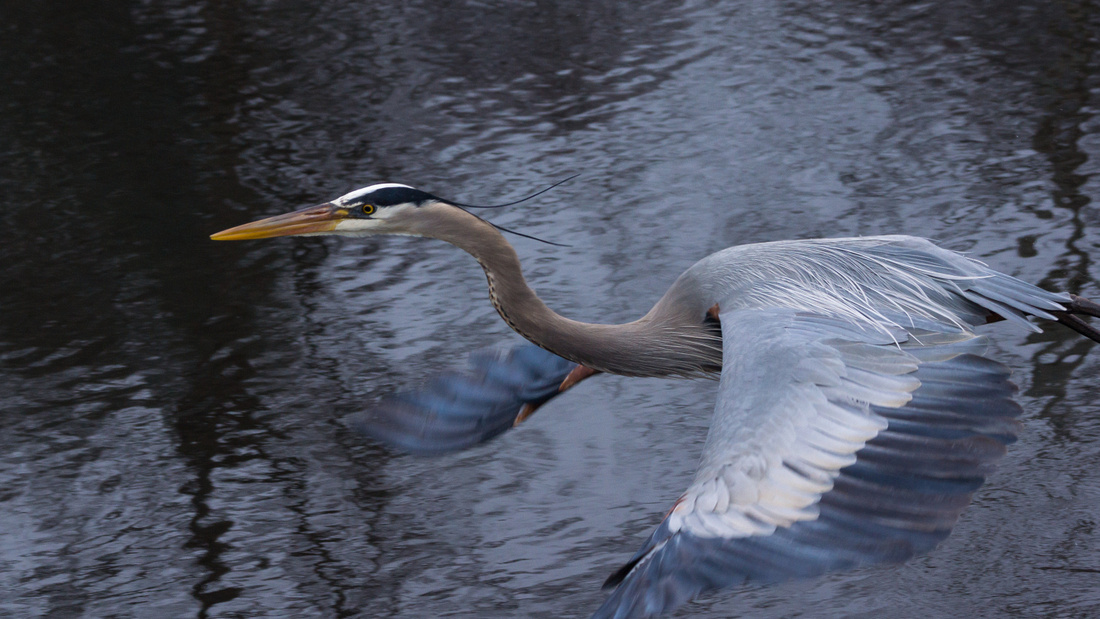

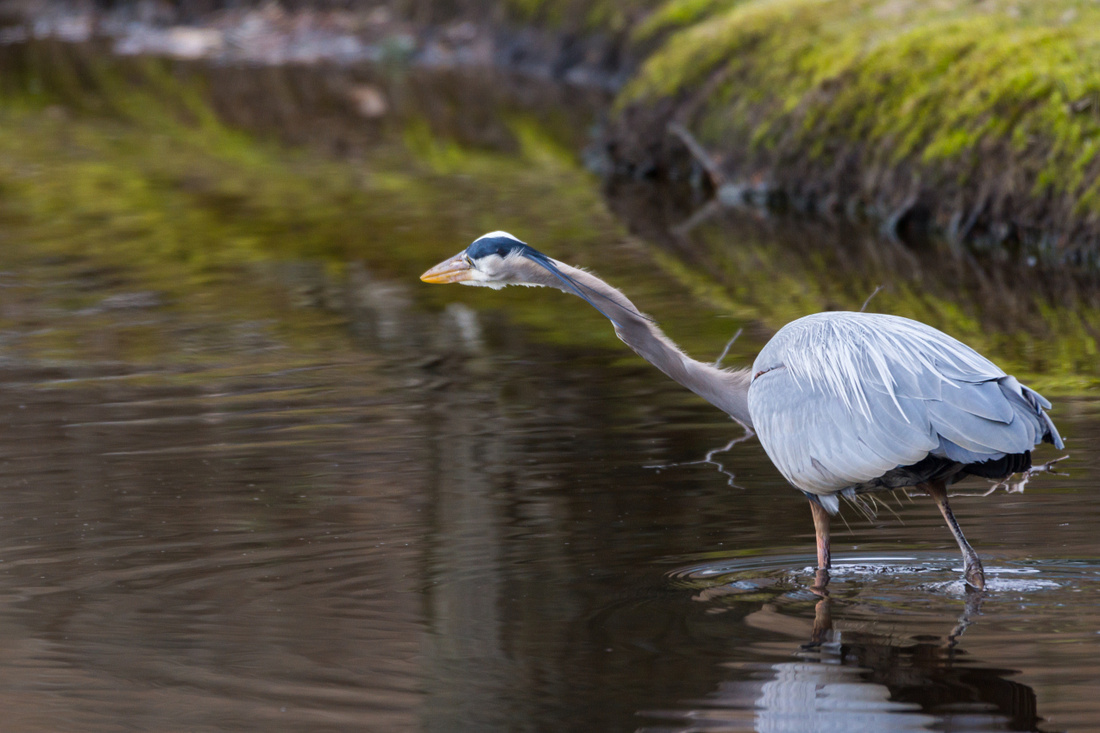



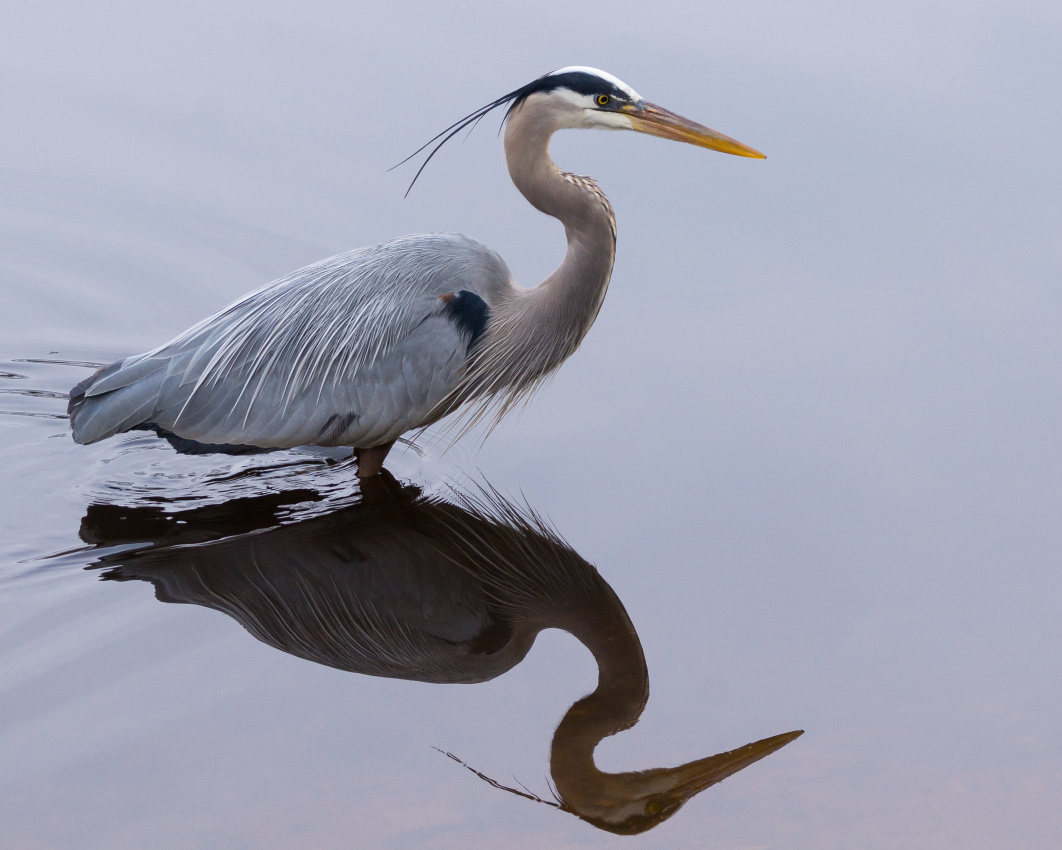

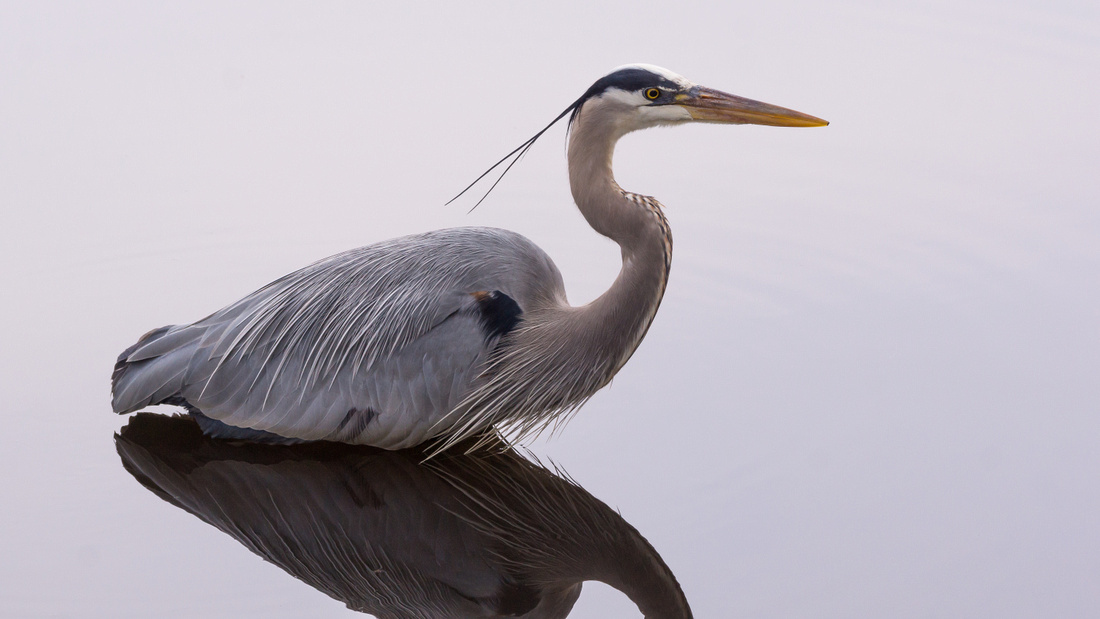

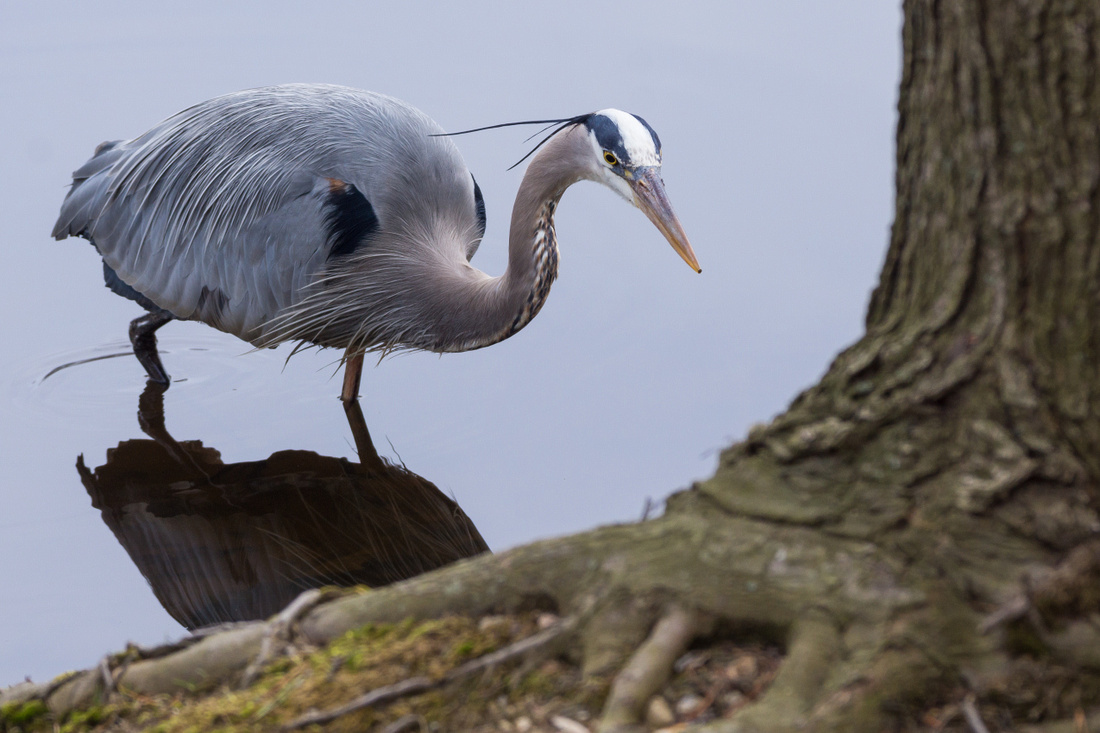

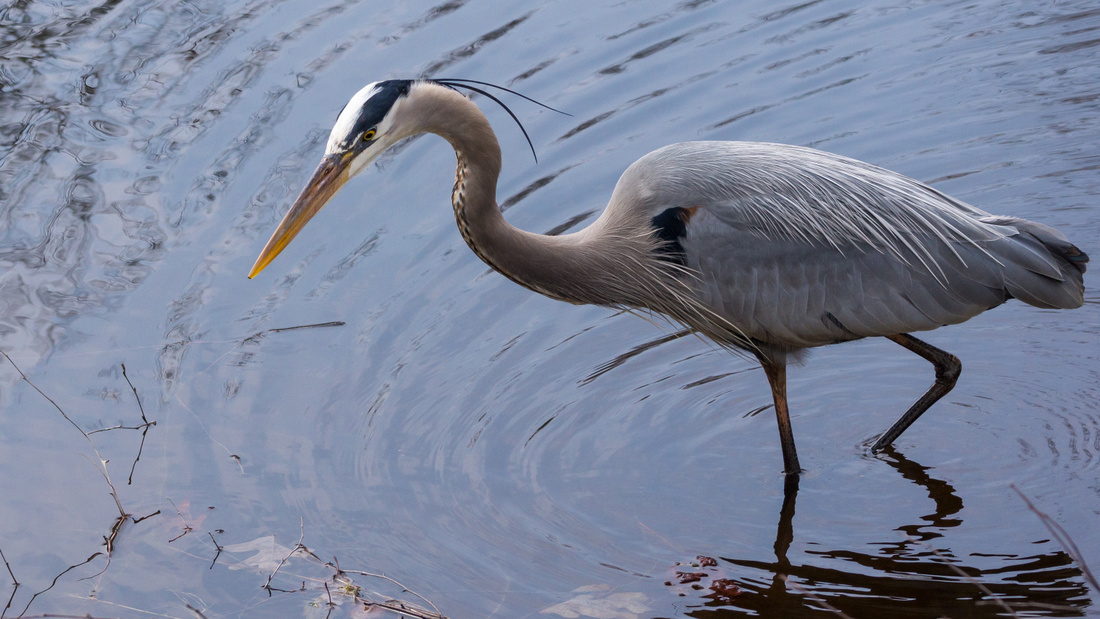

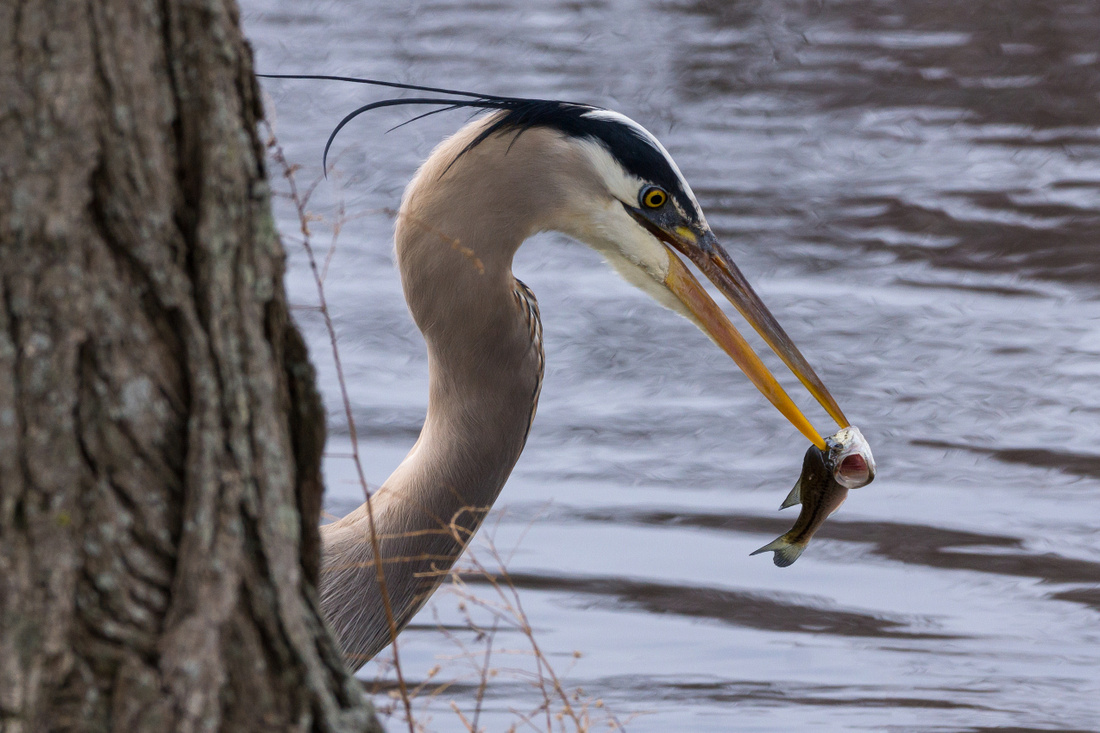

Backyard Birds
Three years ago we purchased new double-pane windows and doors for the house. The glass is of pretty high quality, so shooting birds through it works well. We've also added a couple of bird feeders that attract many local species. In fact, I've spotted over twenty different species in the area around our feeders. Last fall I purchased a new carbon fiber tripod that helps stabilize my camera when shooting. This combination has made it much easier to get relatively high quality images of our feeder birds. So, instead of simply inserting the images in my normal small bird folder, I created a new folder for "Backyard Birds." It's here:
http://aehass.zenfolio.com/p319500579
I've set the folder up so the most recent images are ordered first and simply add new photos chronologically. I've found that shooting as straight as possible through the glass works best and keeping the front of the lens as close as possible to the double-pane glass seems to help image quality too. The windows are tinted, so I normally have to make some minor adjustments to white balance when editing. This method of shooting allows me to normally get within about ten feet of the birds, so shooting with a 300mm lens pretty much fills the frame unless the bird is particularly small. Here's a few examples I've taken to date.
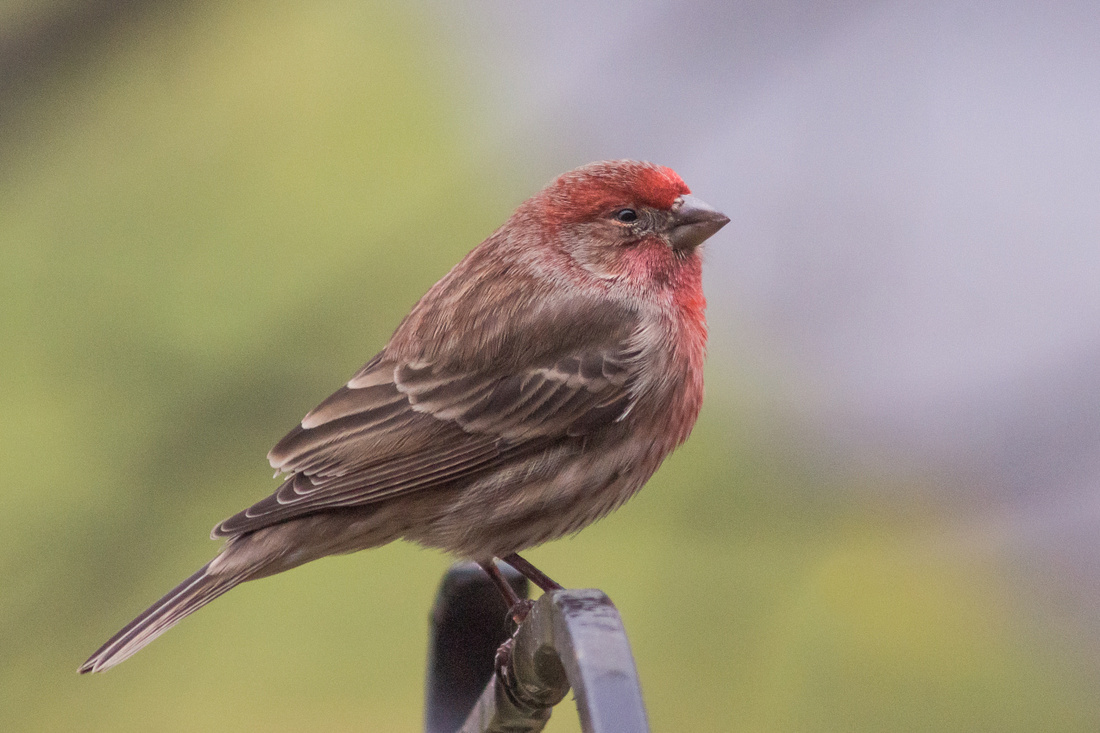

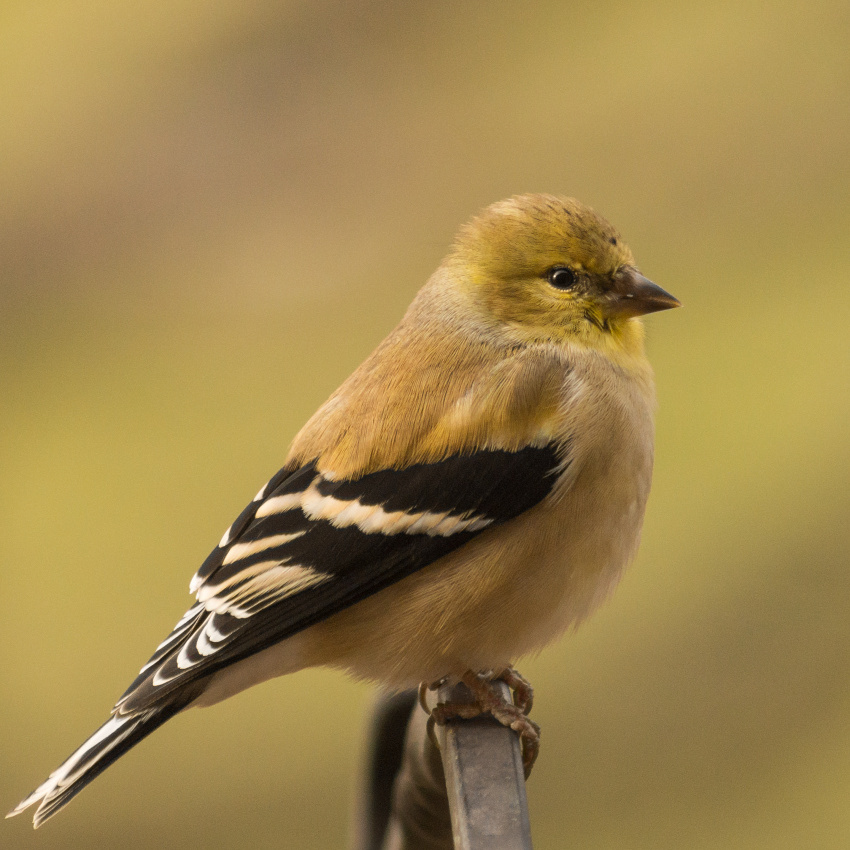

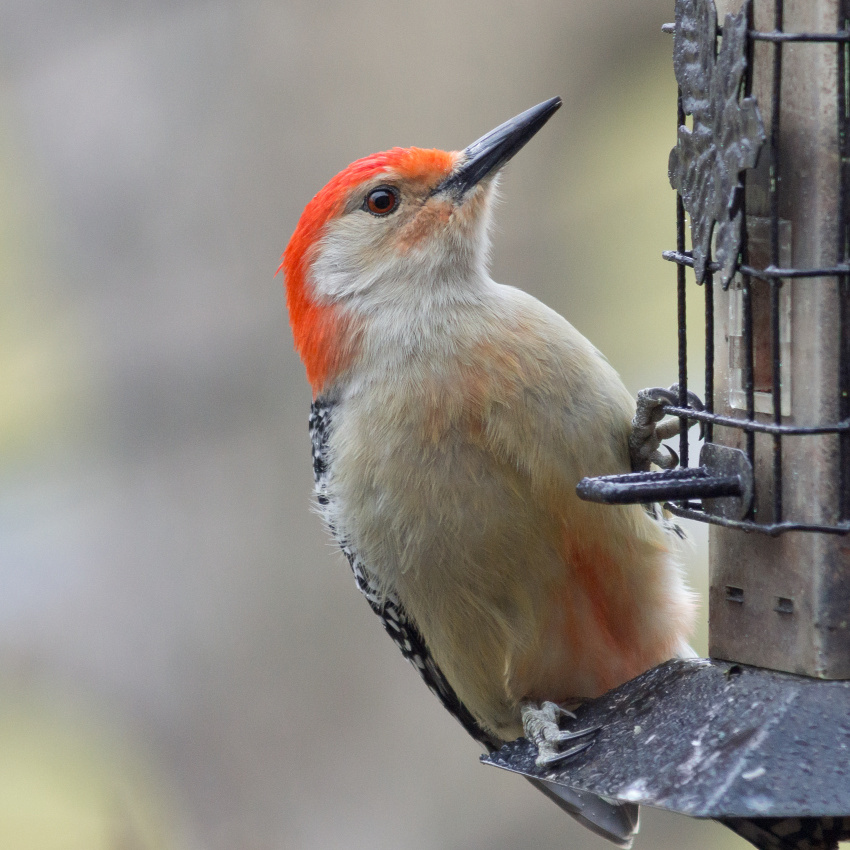

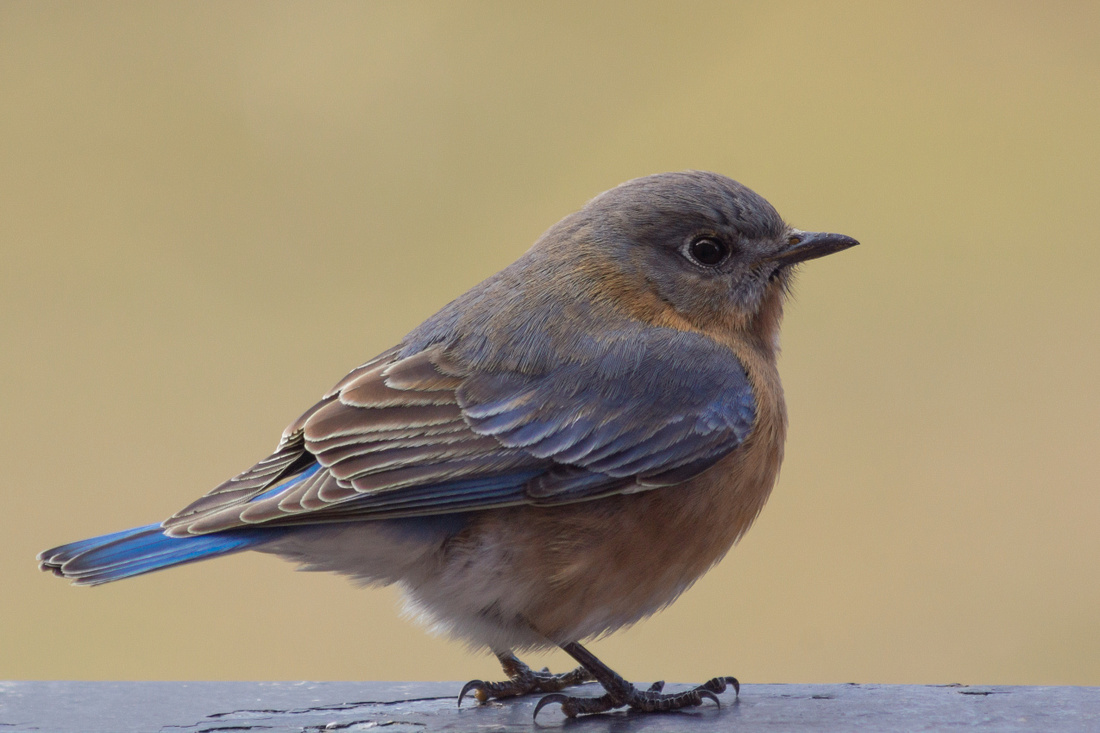



Ruby-crowned Kinglet
The Ruby-crowned Kinglet is a small (four inches long) rather unassuming bird. Many people that have seen one probably didn't give it a second thought - unless - they noticed the small red spot on the top of the male's head. The male and female look identical except for this small red spot. Neither are very common in Reston, but can be seen during their migration in the fall, winter and spring.
I actually photographed a female last January, but have never seen a male since I started photographing birds back in 2008. Today, I took my camera when I went to vote and on my return home, I spotted a male in the creek traversing the 6th fairway of the Reston South golf course. He was feeding on a small bush in the creek and didn't seem bothered by my presence. One of the first shots I took showed his ruby crown distinctly. However, I never got another distinct shot of his crown.
Ruby-crowned Kinglet - male - crown showing


Ruby-crowned Kinglet - male - faint crown


Ruby-crowned Kinglet - male - crown obscured
